‘A Fun Night Being Together and Feeling the Holiday Spirit’
12-12-25
Subscribe
Close
Fill out the form below to receive updates on the latest and greatest within the Friends Academy community.
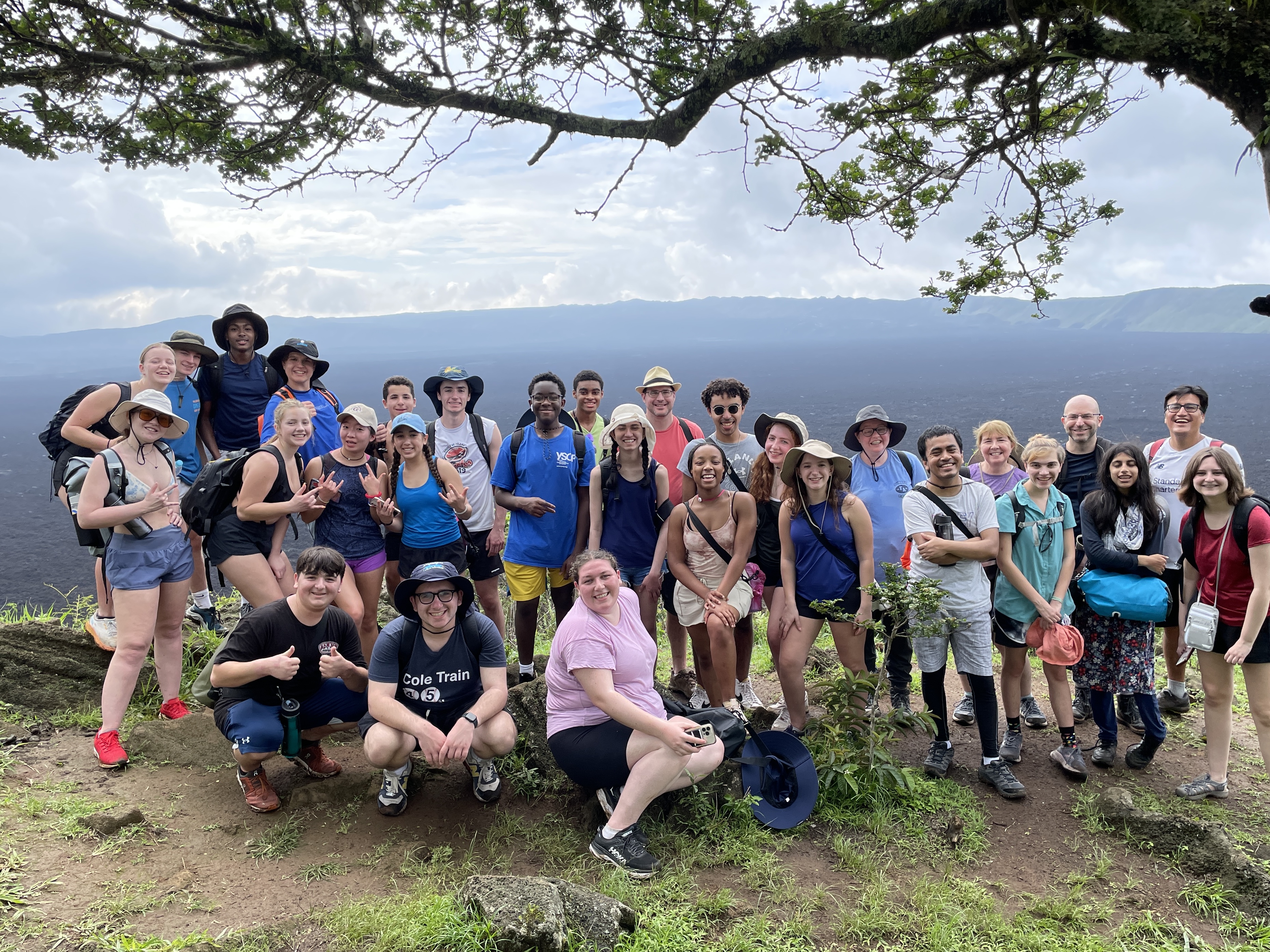
Twenty-three students from the Upper School spent their February winter break on a science-oriented trip in the Galapagos Islands! This is the first Galapagos trip since February 2020 and, according to Upper School Marine biology teacher Jeff Burt, it is apparent that some animal populations, such as the Vermilion Flycatcher, have been on the rise and benefited from the time apart from humans during the pandemic. Joined by Upper School teachers Jen Newitt, Jeff Burt, Tricia Diamond, Vijay Suthar, and Andrew Geha, the group has been “walking in the footsteps of Charles Darwin” by observing the environment that led to his theory of evolution by natural selection.
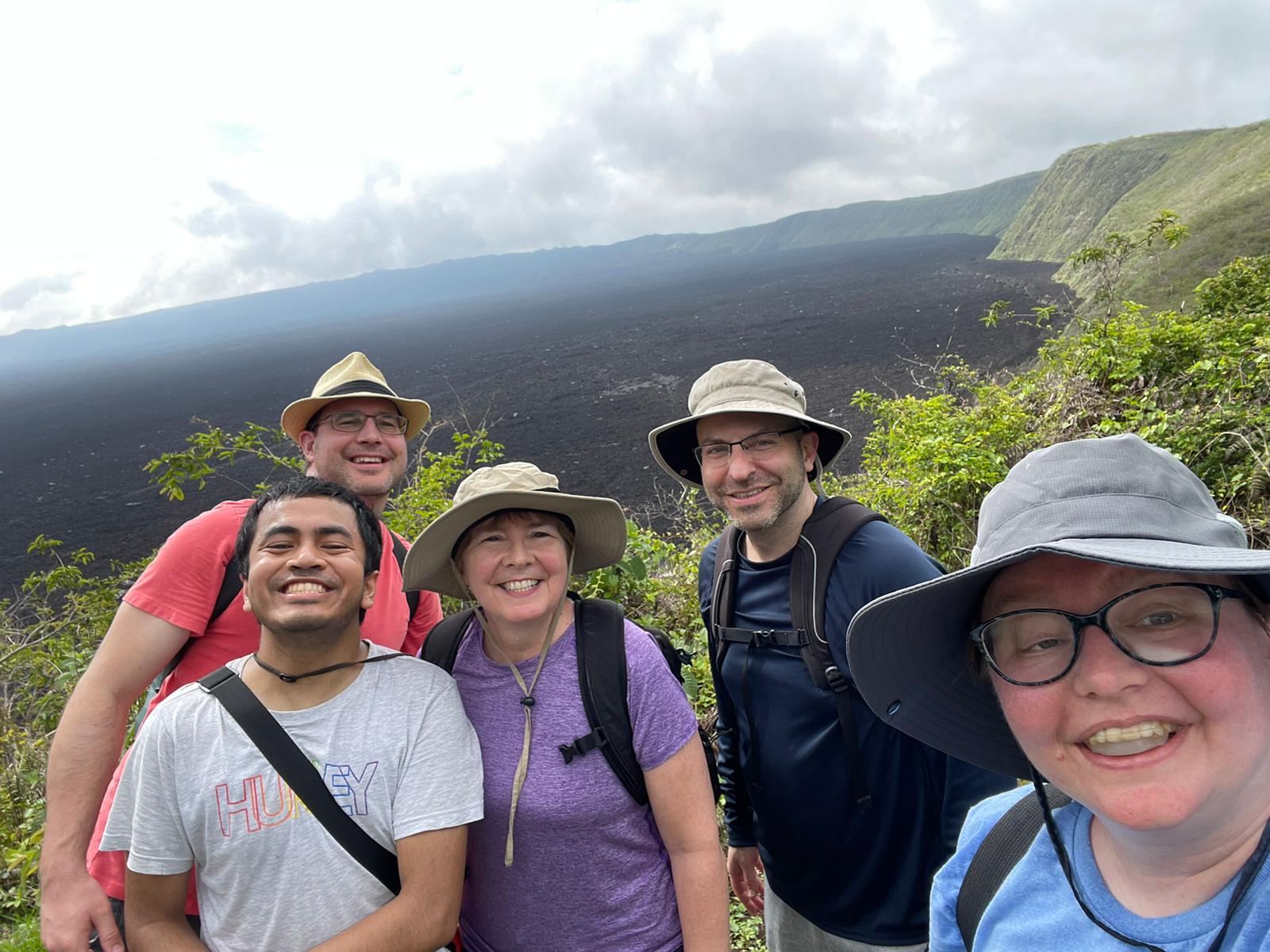
Before the group traveled to the islands of the Galapagos, they set down in Quito, Ecuador in the middle of Carnaval. “The streets were filled with residents in costume, surrounded by booths and street performers,” said Upper School Science Department head Jen Newitt. “There is a custom of spraying each other with foam… which we found out when a nearby shop’s owners gleefully sprayed us!,” she added. Students toured and climbed to the top of the Basilica del Vito Nacional, which provided a clear view of the iconic Virgin of El Panecillo statue, which stands on a hill in the heart of the city.
This leg of the trip also included a lesson on how to make chocolate from the cacao bean, as well as an Ecuadorian chocolate tasting and a trip to the Equator. At the interactive museum on the Equator, students had the opportunity to perform several experiments to show the unique gravitational effects of the location, such as enhanced abilities to balance eggs on pins, the change in rotation of water down a drain on either side of the Equator, and the difficulty to maintain body balance when walking in a line with eyes closed.
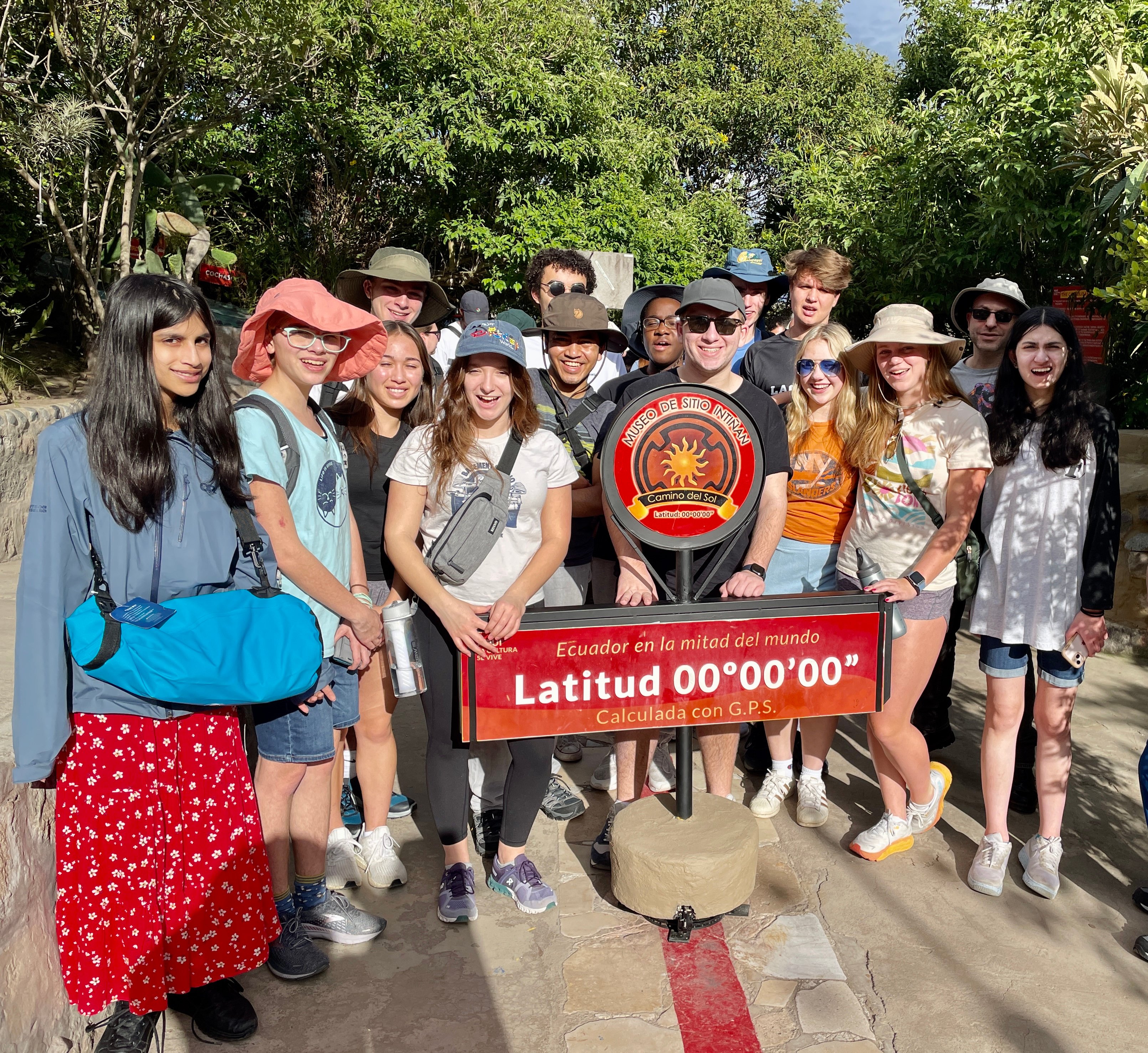
After arrival in the Islands, the group hiked up to the edge of the Sierra Negra Volcano crater with their Galapagos naturalists – it is the second largest in the world, measuring six miles across. “It looks like a lake, but it’s actually filled with volcanic ash,” remarked Mrs. Newitt.
Students and chaperones took in the local cuisine, where sopa or soup was served with nearly all lunches and dinners. “Sopa was made with fresh ingredients, including even the feet of chicken,” explained Mrs. Newitt. Yucca fries, delicate thin crust empanadas and freshly squeezed fruit juices were also served with every meal, usually with exotic flavors like passion fruit, blackberry, naranjilla, and guanabana.
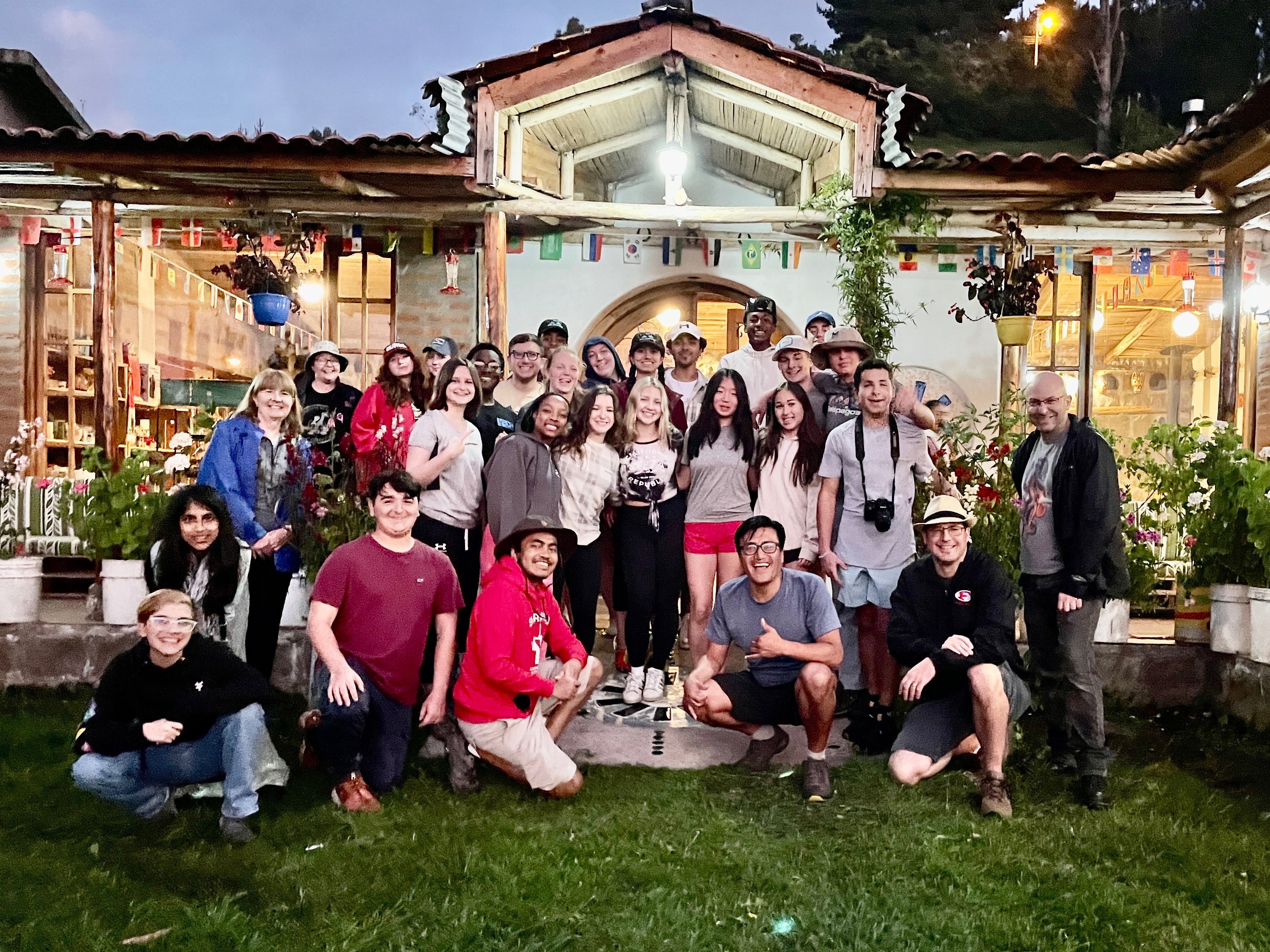
Water taxis and boat excursions were the predominant means of travel throughout the islands. “All told, we took six flights to get to the Galapagagos – and all six were on time!” shared Mrs. Newitt.
A highlight of the trip was swimming and snorkeling at Las Grietas fissure canyon swimming hole. The water is cool and emerald green, calm and crystal clear, and is sandwiched in a crevasse between high volcanic walls. It didn’t take much to convince both students and chaperones to jump and dive into the waters below! Students also snorkeled at Las Tintoreras, a bay where they saw tropical fish, sea turtles, manta rays, and swam over sleeping white-tipped reef sharks.
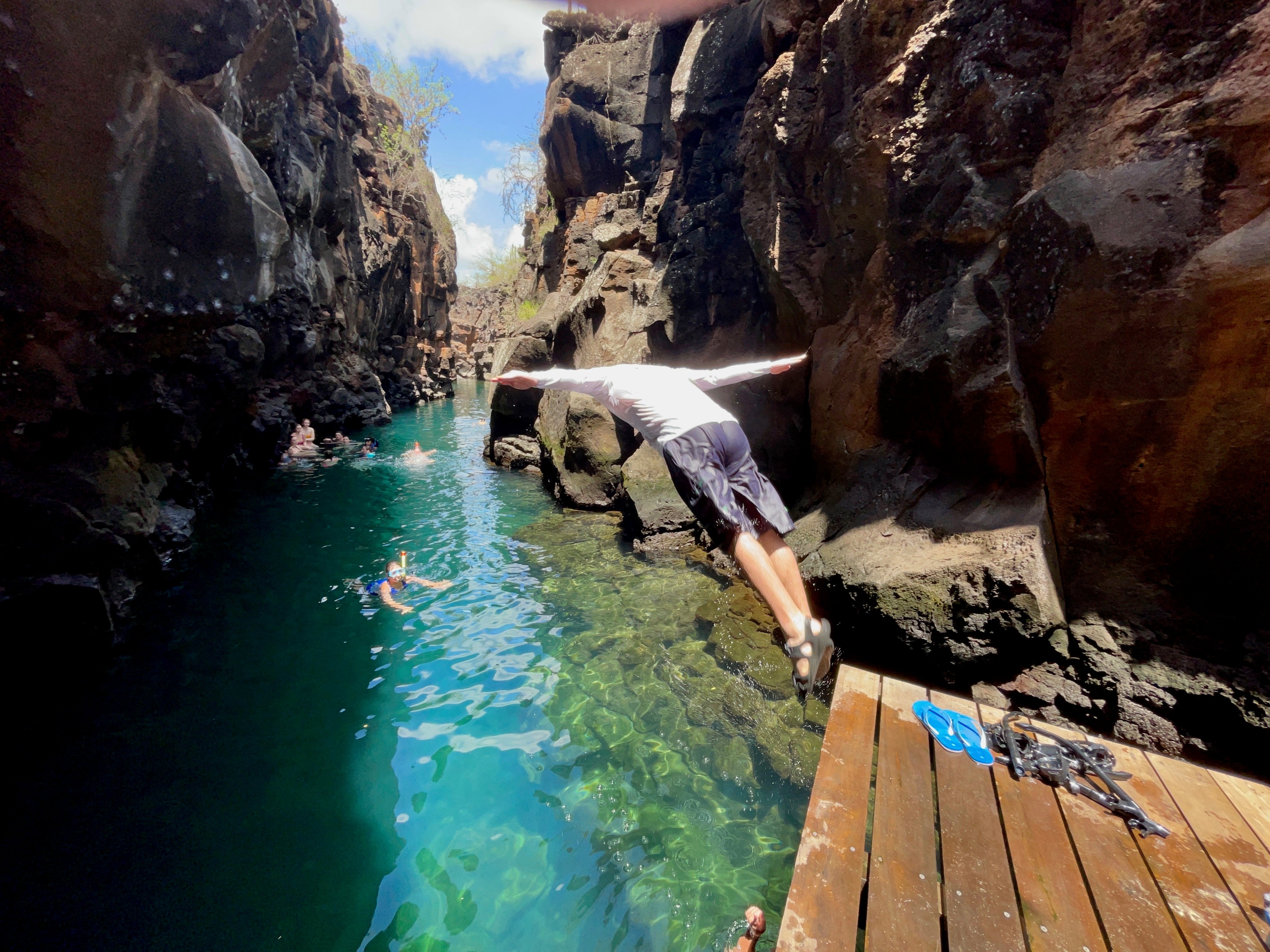 Students and adults hiked through various kinds of terrain – from a hike through the forest to get to the Sierra Negra volcano; to navigating a mangrove swamp to reach Tortuga Bay beach; to traversing the cactus forest to Las Grietas in Santa Cruz Island. “We walked on a beautiful trail on a marine iguana nesting island,” said Mrs. Newitt. “The iguanas are as ubiquitous as the sea lions, and we saw them everywhere we went, including prints of their paws and their tail dragging down the middle,” she added.
Students and adults hiked through various kinds of terrain – from a hike through the forest to get to the Sierra Negra volcano; to navigating a mangrove swamp to reach Tortuga Bay beach; to traversing the cactus forest to Las Grietas in Santa Cruz Island. “We walked on a beautiful trail on a marine iguana nesting island,” said Mrs. Newitt. “The iguanas are as ubiquitous as the sea lions, and we saw them everywhere we went, including prints of their paws and their tail dragging down the middle,” she added.
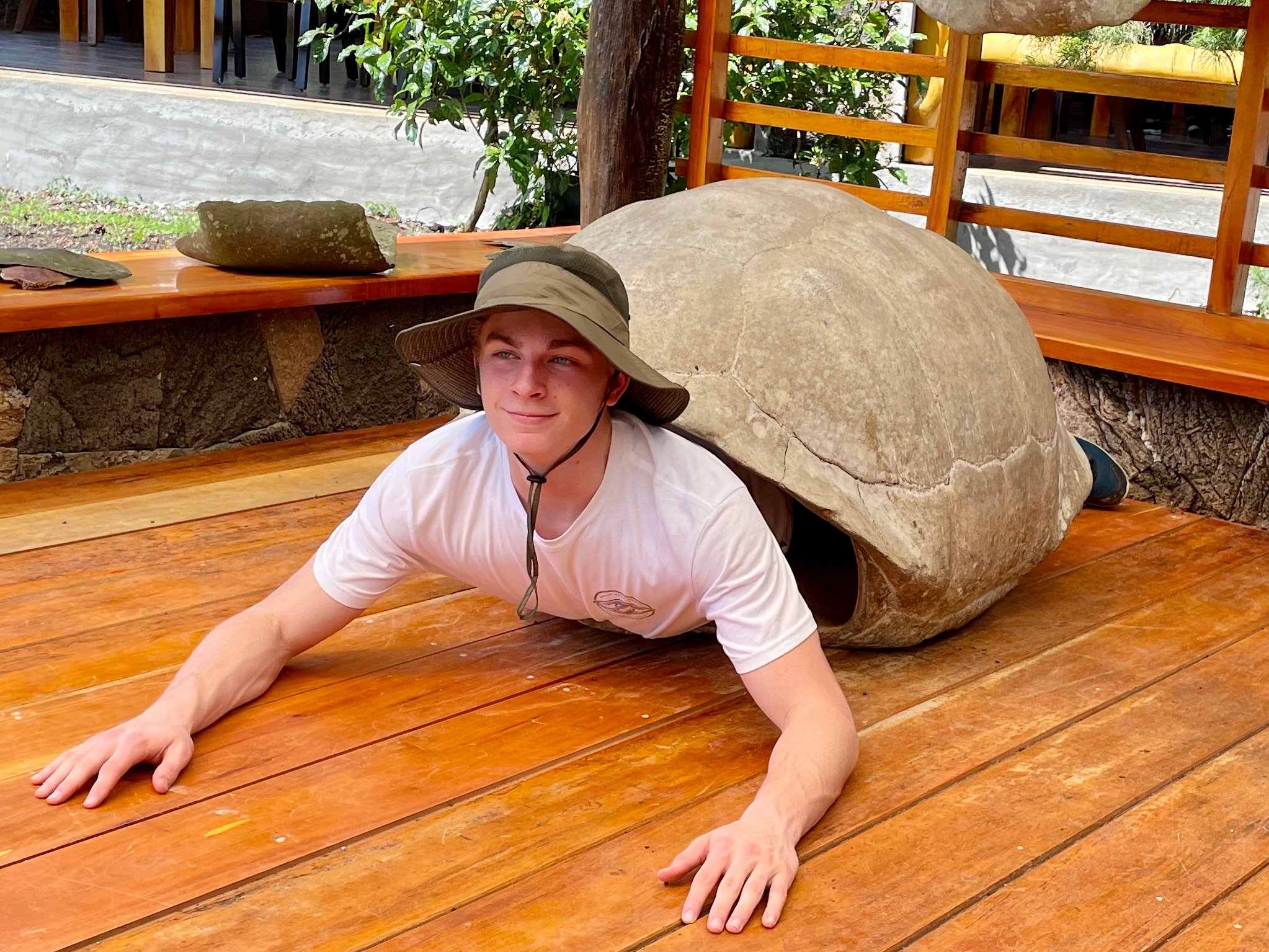 Native animal life was never too far away. “We never got tired of being surrounded by sleeping sea lions that took over docks, paths, and park benches. We encountered giant tortoises in their natural habitat at the Rancho Primicias,” recalled Mrs. Newitt. Rancho Primicias is a private conservation reserve, where students participated in a service project where they planted endemic shrubs called the Galapagos Croton.
Native animal life was never too far away. “We never got tired of being surrounded by sleeping sea lions that took over docks, paths, and park benches. We encountered giant tortoises in their natural habitat at the Rancho Primicias,” recalled Mrs. Newitt. Rancho Primicias is a private conservation reserve, where students participated in a service project where they planted endemic shrubs called the Galapagos Croton.
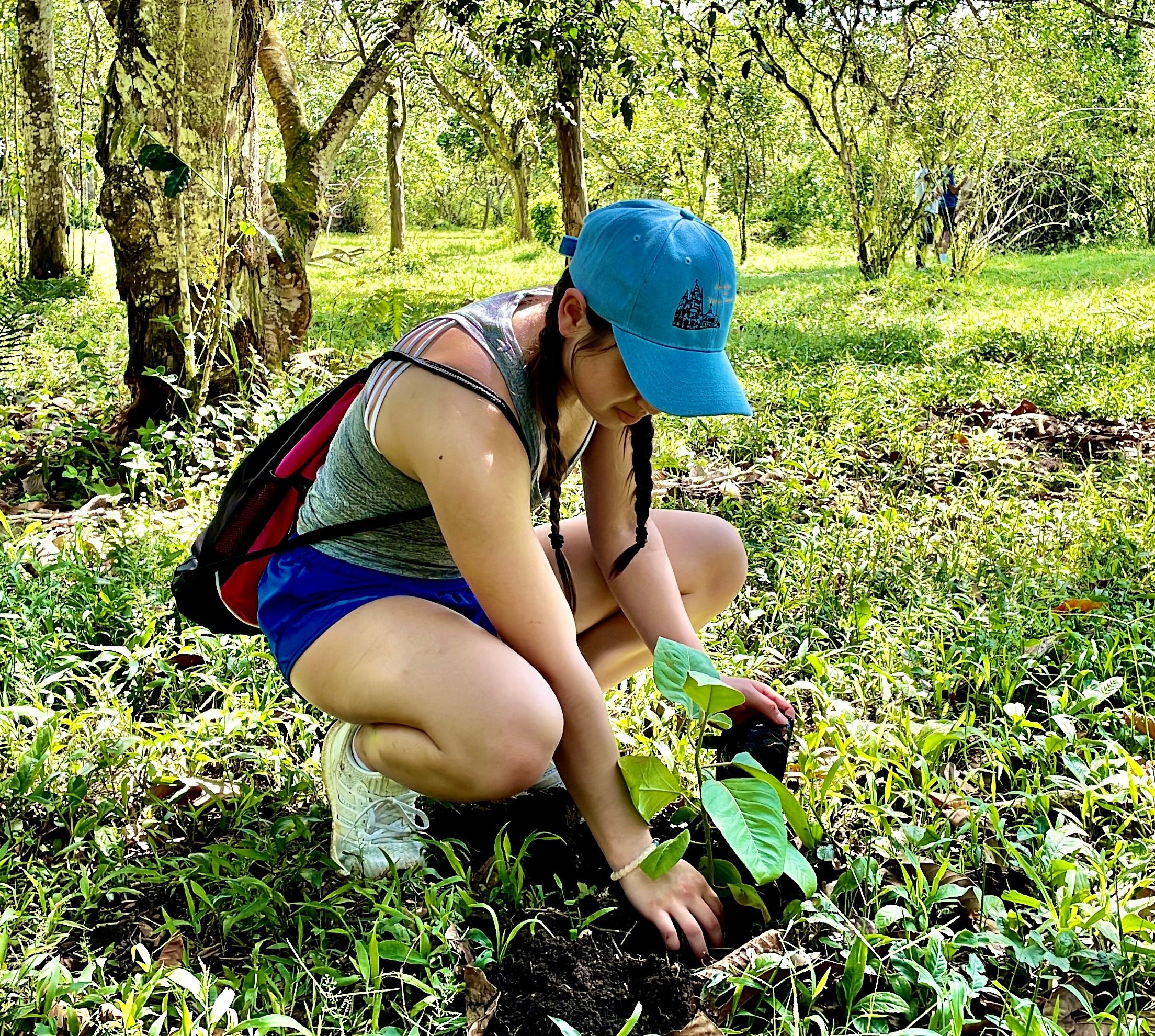
At the Charles Darwin Research Station, students learned about tortoise breeding programs and had the opportunity to observe the preserved body of Lonesome George – the last known individual of the Pinta Island giant tortoise subspecies, which is now considered extinct.
The group had one last afternoon in Quito before departing for home, where they took a steep curvy road up a mountain (with cows sauntering across the road) above the city, and at 12,000 feet altitude arrived at a “hidden gem” family-owned restaurant. “We had a delicious early dinner, some pick-up fútbol with our hosts and tour guide, petted the resident llama, delighted in the stunning garden with hummingbirds flying all around, and peered into a telescope to a clear view of the moon. The evening ended in a closing circle where we shared gratitude for our wonderful and beloved tour guide Diego,” said Mrs. Newitt.
Did you enjoy this post? Here are a few more we think you'd be interested in:
Fill out the form below to receive updates on the latest and greatest within the Friends Academy community.